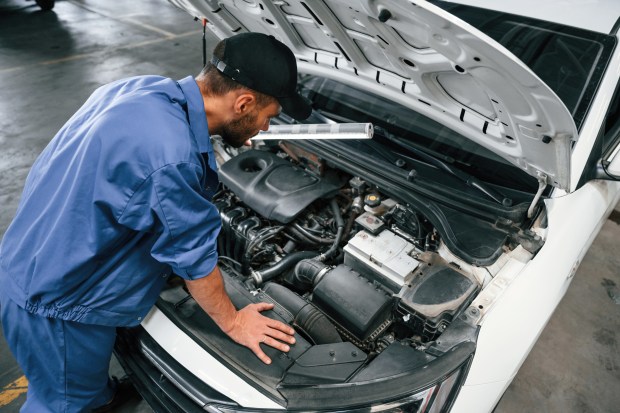A PROFESSIONAL mechanic issued advice to car owners to help avoid being ripped off for repairs – he said a single question can halt scams.
He said the question can show that you’re taking charges seriously, even if you know nothing about cars.
Motor Car Nut is a channel on YouTube, Instagram, and TikTok (@motorcarnut) that publishes DIY maintenance advice, tips, and tricks with the premise of saving customers money.
In a recent video uploaded to his channel, he was working on a Volkswagen SUV and discovered something sinister in the glovebox.
A past repair receipt revealed the customer took the car into a shop for repairs and was overcharged by roughly $1,000.
There were three “repairs” that stood out to him the most.
Read More Mechanic Advice
Two of them were never done, according to his inspection.
“It’s so obvious to me that they’re stealing from the customer I just had to make this video,” he said, flipping through the receipt.
“First, you can see they were charged for a complete power steering flush and all-new fluid, that was only $85 okay, it’s whatever.”
There was a problem with the charge, due to a lack of certain parts that would deem that repair necessary.
“That’s all well and good, but, this car has electronic steering,” he continued.
“There’s no fluid. It’s not hydraulic. There’s no fluid because it’s an electric motor. That’s a blatant lie.”
Seeing how confident they were in charging his customer for that, he lifted the car to inspect other repairs they claimed to have done.
He said they were charged for a brake flush that was never done.
“The fittings were all brand new, there were no tool marks,” he said.
The customer was also overcharged $253 for automatic transmission fluid, which, upon inspection, he could tell was never done.
Even as a customer who has never picked up a wrench, there’s a question he advises asking your mechanic before paying a bill close to or over $1,000.
“With large bills like this, it’s important to make sure you get your old parts back and if you could see the old fluid,” he explained.
How to avoid being scammed at the repair shop
Motorautocar and the AARP have east-to-follow tips to avoid being scammed by a repair shop.
- Motorautocar suggests asking to see parts that have been replaced or to see old fluids after they were swapped. If the shop says that’s impossible or refuses, it could be a sign it wasn’t done.
- Ask for a walkaround of the repairs that were done. Most mechanics are happy to show you what was done in the shop. While being walked around, look for evidence of repairs like the area being cleaned off, shiny new parts, tool marks on the bolts, tools being out or nearby, etc.
- Before taking your car in, look at other customer reviews on Google, Yelp, or Facebook. Many customers only review a company if they have negative reviews, so keep an eye out.
- For costly repairs, consider getting multiple opinions. If two to three shops suggest identical repairs, it’s likely to be true.
- Test a new shop with minor issues you’re aware of to see if they add anything to the repair bill.
- If applicable, bring someone to the shop who knows about cars to have them double-check or read a repair bill.
- Get everything on paper. Not only is it important for your repair records, but it can help protect you if legal measures are necessary.
Source: Motorautocar, AARP
“If you ask for these things, they’ll go, ‘Oh, this guy’s a little knowledgable and a little pesky, I better not take advantage of him or her. This is just a heads-up. This guy paid for repairs and got ripped off by $1,000 minimum.”
He noted that female customers tend to be made a victim of this tactic more than male customers, as many assume they don’t know anything about cars.
He also said that many non-specialty cars, like Japanese or American cars, tend to keep their new and old fluid in large drums so it may be difficult for them to show you the old fluid, but old parts can be shown.
You can even ask for a walkthrough of the repairs made so you can look for evidence of any changes yourself.

